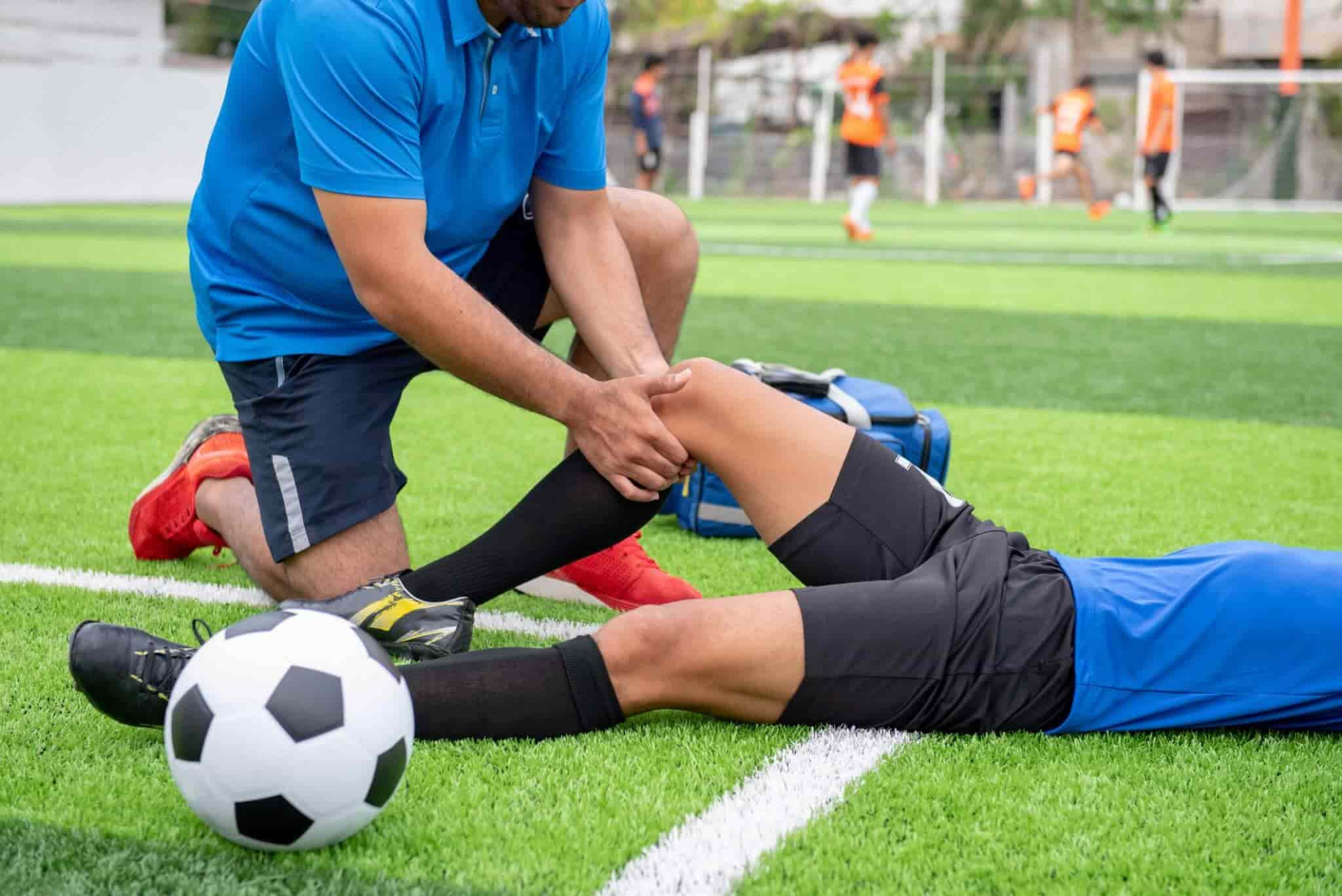Soccer is a sport that is loved by millions of people around the world. It is a game that requires skill, agility, and athleticism. However, with any sport comes the risk of injury. Soccer is no exception. In fact, soccer is known for some of the worst injuries in sports history. The following paragraphs will discuss some of the worst injuries that have occurred in soccer and the impact they have had on the sport.
One of the most common injuries in soccer is the ankle sprain. This injury occurs when the ligaments in the ankle are stretched or torn. It can be caused by a sudden change in direction, a collision with another player, or landing awkwardly after a jump. While ankle sprains are not typically considered a serious injury, they can be painful and can put a player out of commission for several weeks.
Another common injury in soccer is the knee injury. Knee injuries can range from minor sprains to more serious injuries such as torn ligaments or cartilage damage. These injuries can be caused by a collision with another player, a sudden change in direction, or landing awkwardly after a jump. Knee injuries can be particularly devastating for soccer players, as they can take months to heal and can greatly impact a player’s ability to perform on the field.
ACL Injuries
ACL injuries are one of the most common and devastating injuries in soccer. The ACL, or anterior cruciate ligament, is a crucial ligament that helps stabilize the knee joint. When this ligament is torn or ruptured, it can result in severe pain, swelling, and instability.
ACL injuries can occur due to a variety of reasons, including sudden changes in direction, landing awkwardly after a jump, or colliding with another player. Women are more prone to ACL injuries than men, and research suggests that this could be due to differences in anatomy and hormonal factors.
Treatment for ACL injuries typically involves surgery to repair or reconstruct the damaged ligament, followed by a lengthy rehabilitation period. Players may be out of action for several months, and it can take up to a year for them to fully recover and regain their pre-injury form.
Prevention is key when it comes to ACL injuries. Players can reduce their risk of injury by strengthening the muscles around the knee joint, improving their balance and agility, and using proper technique when performing maneuvers on the field. Wearing knee braces or using other protective gear can also help prevent ACL injuries.
Concussions
Soccer players are at risk of sustaining concussions, which is a type of traumatic brain injury that can have serious consequences. Players can get concussions from head-to-head collisions, falls, or even from heading the ball.
Concussions can range from mild to severe, and symptoms can include headache, dizziness, confusion, and memory loss. It is crucial for players to seek medical attention immediately if they suspect they have sustained a concussion.
There has been growing concern about the long-term effects of concussions on soccer players. Studies have shown that repeated concussions can lead to chronic traumatic encephalopathy (CTE), a degenerative brain disease that can cause memory loss, depression, and other cognitive problems.
As a result, soccer organizations have taken steps to reduce the risk of concussions. For example, some leagues have banned heading for younger players, and others have implemented concussion protocols that require players to be evaluated by medical professionals before returning to play.
Broken Bones
Soccer is a contact sport, and with contact comes the risk of injury. One of the most common and painful injuries in soccer is a broken bone. Broken bones can occur in various parts of the body, including the legs, feet, arms, and hands.
Leg fractures are the most common type of broken bone in soccer. These injuries can occur due to a collision with another player or from landing awkwardly after a jump. The tibia and fibula are two bones in the lower leg that are most commonly broken in soccer players.
Foot fractures are also common in soccer players, particularly in the metatarsal bones. These injuries can occur from being stepped on or from a sudden change in direction while running.
Arm and hand fractures are less common in soccer, but they can still occur. These injuries usually happen from falling onto an outstretched arm or from a collision with another player.
Broken bones can be extremely painful and can take weeks or even months to heal. Treatment usually involves immobilizing the affected area with a cast or brace and allowing time for the bone to heal. In some cases, surgery may be necessary to repair the fracture.
Muscle Tears
Soccer players are prone to muscle tears, especially in the legs. These injuries occur when the muscle fibers are stretched beyond their limits and tear. They can be caused by sudden movements, overuse, or inadequate warm-up. Muscle tears can range from mild to severe, and the recovery time depends on the severity of the injury.
Hamstring injuries are the most common type of muscle tear in soccer players. They occur when the muscles at the back of the thigh are stretched beyond their limits. Hamstring injuries are often caused by sudden movements, such as sprinting or kicking, and can take several weeks to heal.
Quadriceps injuries are also common in soccer players. These injuries occur when the muscles at the front of the thigh are stretched beyond their limits. Quadriceps injuries can be caused by sudden movements, overuse, or inadequate warm-up. They can take several weeks to heal, depending on the severity of the injury.
To prevent muscle tears, soccer players should warm up properly before training or games. They should also stretch regularly and gradually increase the intensity of their training. It is also important to rest and recover properly between training sessions and games to avoid overuse injuries.
Conclusion
The world of soccer has seen some of the most gruesome injuries in the history of sports. These injuries range from broken bones to torn ligaments and even head injuries. The players who have suffered from these injuries have had to endure a lot of pain and suffering, and some have even had to end their careers prematurely due to the severity of their injuries.
It is important for players, coaches, and referees to take all necessary precautions to prevent injuries from occurring. This includes wearing proper safety gear, following the rules of the game, and ensuring that the playing surface is safe and well-maintained.
Despite the risks involved, soccer remains one of the most popular sports in the world. Fans continue to flock to stadiums to watch their favorite teams play, and players continue to push themselves to be the best they can be. While injuries are an unfortunate part of the game, they do not detract from the beauty and excitement of soccer.







